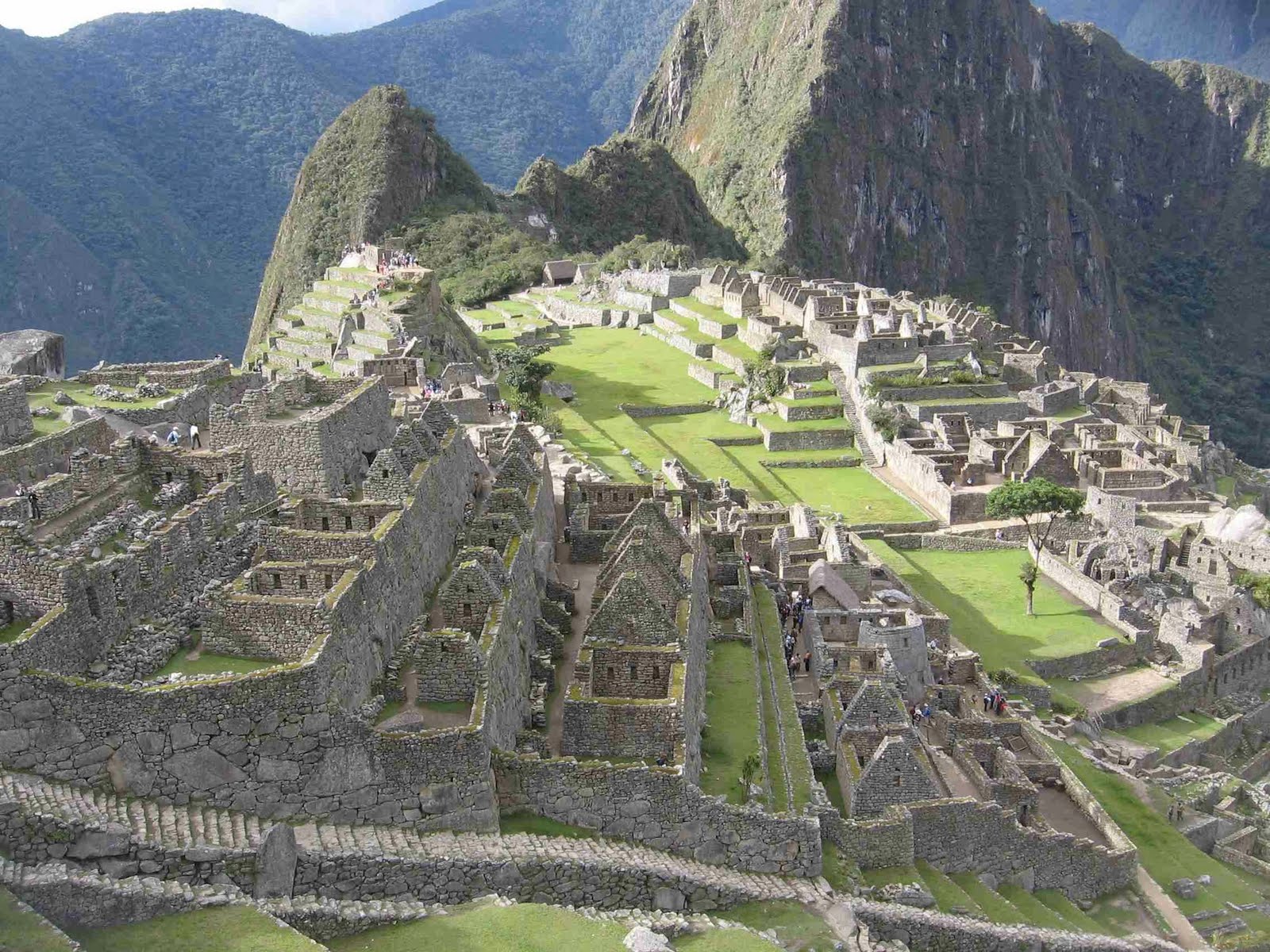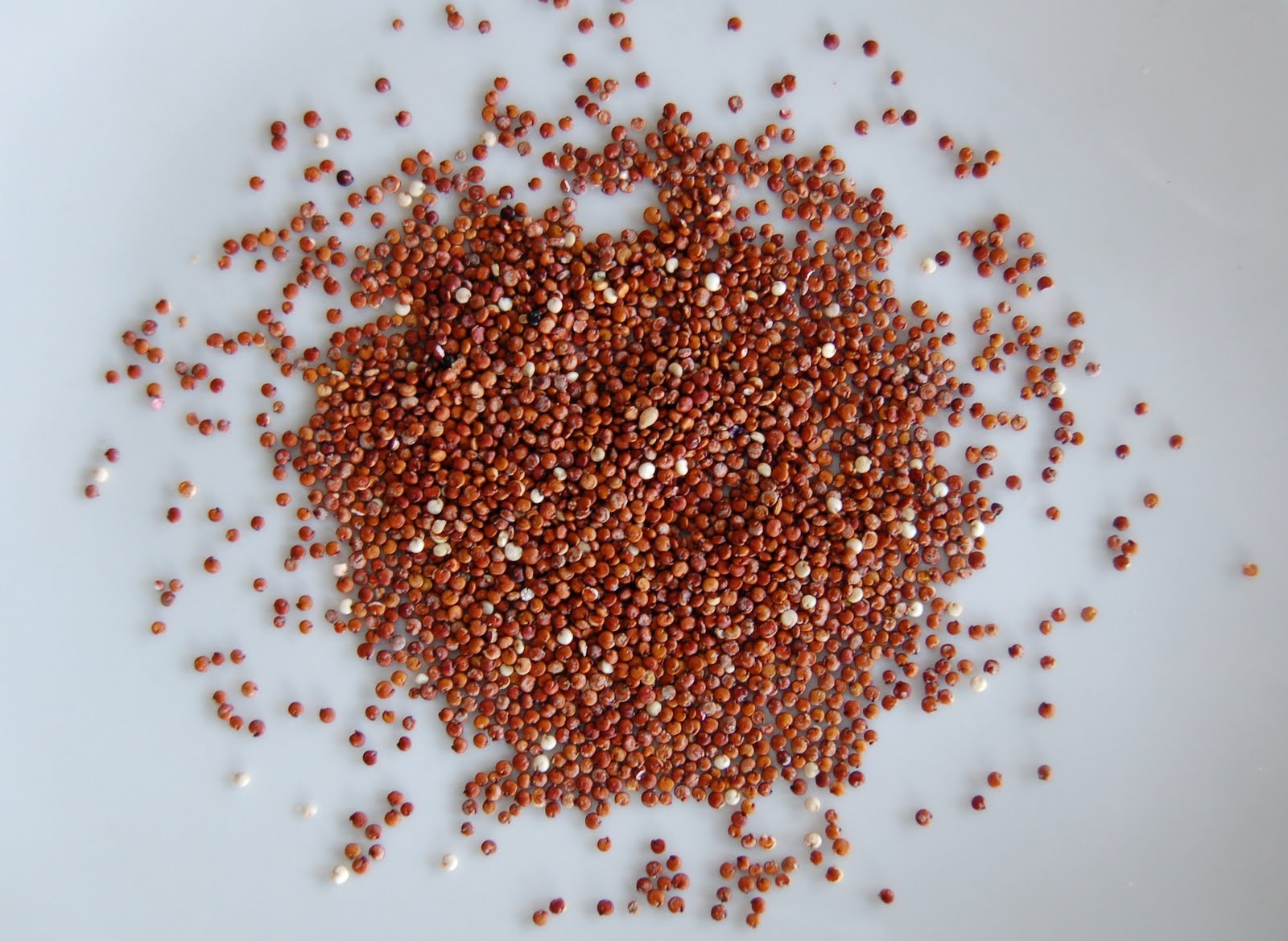I’ve noticed that in the Post-Workout Dinner post, quinoa got a lot of attention. I thought it was a good idea to expand a little on this wonder food.
I'm gonna make full disclosure: I love quinoa. Texture, flavor and nutrition facts just makes it the perfect food for me. So my judgement it’s totally biased. I really think that you should give it a shot and I’m quite positive that at some point it will become part of your diet.

Some history on quinoa
Quinoa is an ancient food that has been cultivated in the South American Andes since at least 3,000 B.C. and has been a staple food of millions of the native inhabitants.
The ancient Incas used to call it the "mother grain" and revered it as sacred.
Quinoa was used to sustain Incan armies, which frequently marched for many days eating a mixture of quinoa and fat, known as "war balls."
After the Spanish conquest in the 1500s, there was a 400-year decline in the production of quinoa. It became a minor crop at that time and was grown only by peasants in remote areas for local consumption.
In Peru, Chile and Bolivia, quinoa is now widely cultivated for its nutritious seeds that are used in creating various soups and bread, and also fermented with millet to make a beer-like beverage. Quinoa has been grown outside of South America for a relatively short time but can now be found in most specialty food stores all over the world.

What exaclty is quinoa?
Quinoa is not a grain, but is the seed of the Chenopodium or Goosefoot plant. It is used as a grain and substituted for grains because of it's cooking characteristics. Beets, spinach, Swiss chard, and lamb's quarters are all relatives of quinoa (isn’t that great?)
Quinoa grains range in color from ivory to pinks, brown to reds, or almost black, depending on the variety. There are over 120 species of quinoa, but only three main varieties are cultivated; one producing very pale seeds, called the white or sweet variety; a dark red fruited variety called red quinoa; and a black quinoa.

The seeds are similar in size to millet but are flat with a pointed oval shape. They look like a cross between a sesame seed and millet. Quinoa has a delightful characteristic that is all it's own: as it cooks, the outer germ around each grain twists outward forming a little white, spiral tail, which is attached to the kernel. The grain itself is soft and delicate and the tail is crunchy which creates and interesting texture combination and pleasant "crunch" when eating the grain.
Quinoa has a fluffy consistency and a mild, delicate, slightly nutty flavor that borders on bland.
Nutrition Facts
The quinoa seed is high in protein, calcium and iron, a relatively good source of vitamin E and several of the B vitamins.
It contains an almost perfect balance of all eight essential amino acids needed for tissue development in humans. It is exceptionally high in lysine, cystine and methionine-amino acids typically low in other grains. It is a good complement for legumes, which are often low in methionine and cystine.
The protein in quinoa is considered to be a complete protein due to the presence of all 8 essential amino acids.
Because quinoa is a very good source of manganese as well as a good source of magnesium, iron, copper and phosphorus, this "grain" may be especially valuable for persons with migraine headaches, diabetes and atherosclerosis.
Some types of wheat come close to matching quinoa's protein content, but grains such as barley, corn, and rice generally have less than half the protein of quinoa.
One cup of quinoa scores 222 calories, the majority of which comes from carbs (39 grams). You also get 8 grams of protein and 3 grams of fat which is relatively high when compared to other grains, but it boasts a low sodium content and also provides valuable starch and fiber.
Quinoa also contains albumen, a protein that is found in egg whites, blood serum, and many plant and animal tissues.
The seeds are gluten-free which makes this a nutritious and flavorful alternative grain for those with gluten sensitivity.

Quinoa is an amazing food, if you haven't done it yet, you should really give it a try!
TheIronYou
Some history on quinoa
Quinoa is an ancient food that has been cultivated in the South American Andes since at least 3,000 B.C. and has been a staple food of millions of the native inhabitants.
The ancient Incas used to call it the "mother grain" and revered it as sacred.
Quinoa was used to sustain Incan armies, which frequently marched for many days eating a mixture of quinoa and fat, known as "war balls."
After the Spanish conquest in the 1500s, there was a 400-year decline in the production of quinoa. It became a minor crop at that time and was grown only by peasants in remote areas for local consumption.
In Peru, Chile and Bolivia, quinoa is now widely cultivated for its nutritious seeds that are used in creating various soups and bread, and also fermented with millet to make a beer-like beverage. Quinoa has been grown outside of South America for a relatively short time but can now be found in most specialty food stores all over the world.
What exaclty is quinoa?
Quinoa is not a grain, but is the seed of the Chenopodium or Goosefoot plant. It is used as a grain and substituted for grains because of it's cooking characteristics. Beets, spinach, Swiss chard, and lamb's quarters are all relatives of quinoa (isn’t that great?)
Quinoa grains range in color from ivory to pinks, brown to reds, or almost black, depending on the variety. There are over 120 species of quinoa, but only three main varieties are cultivated; one producing very pale seeds, called the white or sweet variety; a dark red fruited variety called red quinoa; and a black quinoa.
The seeds are similar in size to millet but are flat with a pointed oval shape. They look like a cross between a sesame seed and millet. Quinoa has a delightful characteristic that is all it's own: as it cooks, the outer germ around each grain twists outward forming a little white, spiral tail, which is attached to the kernel. The grain itself is soft and delicate and the tail is crunchy which creates and interesting texture combination and pleasant "crunch" when eating the grain.
Quinoa has a fluffy consistency and a mild, delicate, slightly nutty flavor that borders on bland.
Nutrition Facts
The quinoa seed is high in protein, calcium and iron, a relatively good source of vitamin E and several of the B vitamins.
It contains an almost perfect balance of all eight essential amino acids needed for tissue development in humans. It is exceptionally high in lysine, cystine and methionine-amino acids typically low in other grains. It is a good complement for legumes, which are often low in methionine and cystine.
The protein in quinoa is considered to be a complete protein due to the presence of all 8 essential amino acids.
Because quinoa is a very good source of manganese as well as a good source of magnesium, iron, copper and phosphorus, this "grain" may be especially valuable for persons with migraine headaches, diabetes and atherosclerosis.
Some types of wheat come close to matching quinoa's protein content, but grains such as barley, corn, and rice generally have less than half the protein of quinoa.
One cup of quinoa scores 222 calories, the majority of which comes from carbs (39 grams). You also get 8 grams of protein and 3 grams of fat which is relatively high when compared to other grains, but it boasts a low sodium content and also provides valuable starch and fiber.
Quinoa also contains albumen, a protein that is found in egg whites, blood serum, and many plant and animal tissues.
The seeds are gluten-free which makes this a nutritious and flavorful alternative grain for those with gluten sensitivity.
Courtesy of http://nutritiondata.self.com
Quinoa is an amazing food, if you haven't done it yet, you should really give it a try!
TheIronYou


.jpg)
.jpg)







.jpg)


Quinoa doesn't contain gliadin protein and therefore don't aggravate celiac disease.
ReplyDeleteIt's really a good and appetizing food for everyone!
This is really interesting! Thanks for the link--I knew quinoa was a power food but I didn't know much about it's history. Thanks for stopping by my blog!
ReplyDeleteThis is really a wonderful post and you give such fabulous information. I'll add a link to this onto my quinoa post. I haven't cooked quinoa in a while. Thank you for reminding me!
ReplyDeleteHoly Moly, what a font of information on this post, well done. Thanks for your kind comments on my quinoa salad, I've got a lot of healthy (and some decadent) recipes on my blog. Thanks for stopping by, Iron Man!
ReplyDeletehttp://ladivacucina.blogspot.com/2011/06/red-rice-quinoa-salad-with-orange.html
Nice article on quinoa! I have been hooked on it ever since I first encountered it!
ReplyDeleteThanks for leaving a comment on my scarlet quinoa salad post. I went to Peru 12 years ago (to the exact shot you show above!) and discovered it there for the first time. Cheers!
ReplyDelete